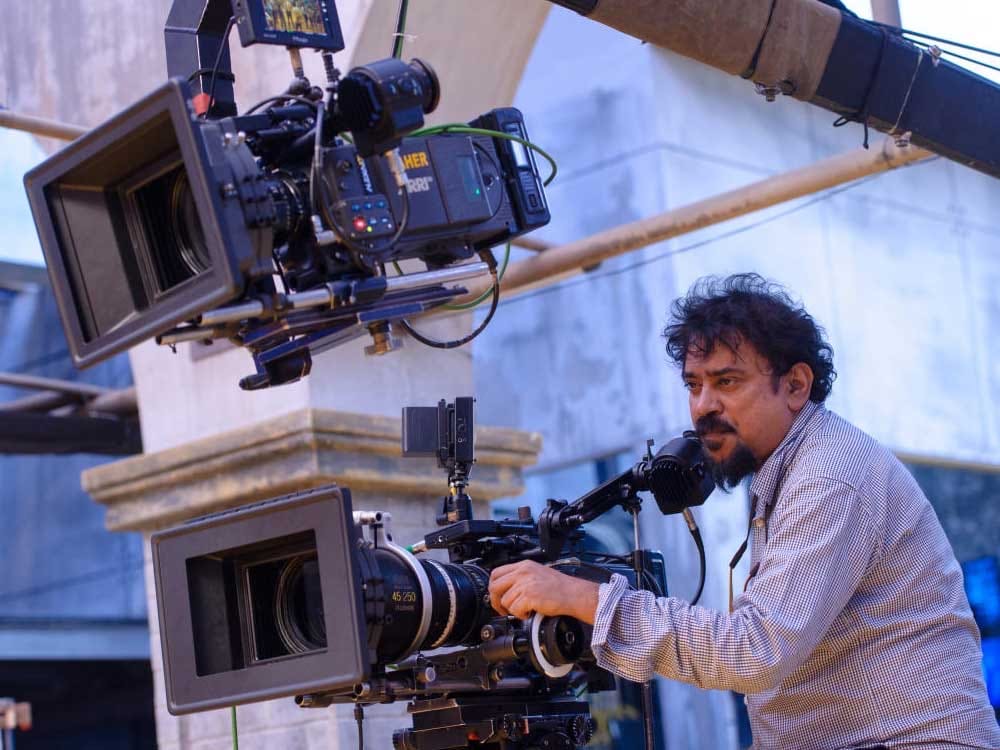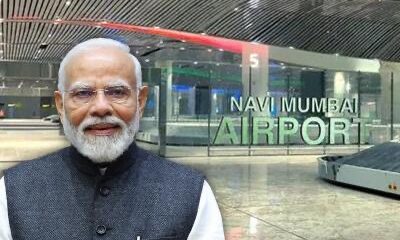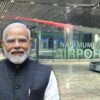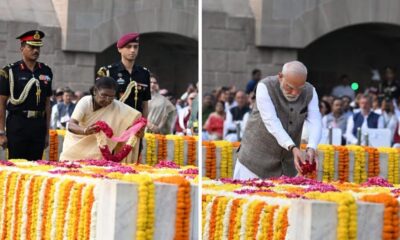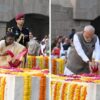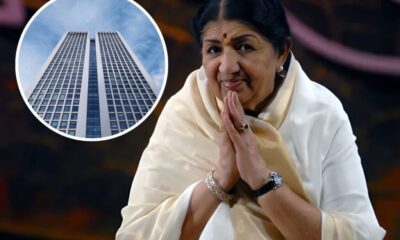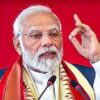Cinematographers are the eyes of a film Sreeram and Santosh Sivan discuss
Cinematographers are the eyes of a film
Sreeram and Santosh Sivan discuss
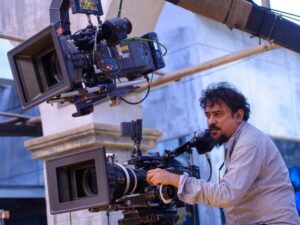
A movie-watching experience is sacred to many. But how many would have ever thought on why only a few films end up staying with you, and others fade like perfume in the wind? People often remember the songs, dialogues and actors, but the feeling that a film leaves behind matters the most – the cosiness and warmth of a rainy street, the thrill of a chase or the quiet sadness in a character’s eyes. Who creates this feeling? Inarguably, the cinematographer.
Movie-making is a concerted job, but the way one sees a film is shaped and envisioned by a cinematographer.
Not many may be versed about a cinematographer in the entertainment industry. Cinematographers are often called the “eyes of the film”- they can make or break a film. As some of India’s finest cinematographers remind us, their role goes far deeper than what we could imagine. They shape how the audience experiences the story itself.
A popular romantic novel could be turned into a film, director writes the story and builds the characters, but eventually, it is the cinematographer who determines how every page feels on screen. Even a simple scene of two people sitting silently can carry different emotions be it romantic if shot in the soft glow of a sunset, it can look tense if framed in harsh shadows, or reflect sadness when filmed against the backdrop of rain.
Speaking to the media cinematographer
PC Sreeram, acknowledged for films like ‘Cheeni Kum’ and ‘Nayakan’, embodies the job of the lensman as a ‘co-author’ who always believed that the cinematographer is the co-author of the film. He or she doesn’t just capture what’s in front of the camera, but also shapes how the audience experiences the story.”
That’s why even a simple story can feel magical when seen through the right lens. Take ‘Cheeni Kum’, for example, where most of the visuals focus on Amitabh Bachchan and Tabu – either talking across a table or walking down a street. Yet the way the film was shot made those quiet conversations feel tender and heartwarming.
Interestingly, as Sreeram shared, “most of ‘Cheeni Kum’ was shot in Mumbai on sets. Only the walking shots with Amitabh and Tabu were done in London. Everything else was recreated in Bombay.”
This shows that the magic of cinema doesn’t always come from exotic locations or flashy visuals, but from the ability of the cinematographer to create a feeling.
He turns emotions into images.Imagine trying to explain heartbreak to someone without using a single word, instead of dialogue, the cinematographer might show an empty chair at a dinner table, a hand brushing past a photograph, or a character walking alone in a vast empty street. These visuals say what words cannot. That’s what turning emotions into images really means, finding visual moments that make the audience feel exactly what the character is going through.
For Om Prakash, who recently worked on Tamil superstar Ajith’s ‘Vidaamuyarchi’, cinematography is all about finding the emotional truth of the story. For Sreeram, cinematography is not just about capturing beautiful images, it’s about translating the director’s vision into an emotional experience for the audience. A film can have a great script and brilliant performances by great artistes, but if the visual language does not support or elevate them, the emotional impact can be lost.
That’s precisely why cinematography can often emerge as the make-or-break element of a movie. It’s the bridge amid the story on paper and the story that lives in the audience’s heart through visuals.
He emphasised that he used extreme
wide-angle lenses in ‘Vidaamuyarchi’ to make the audience feel fear and isolation. “When determining the setting for the visual treatment, he thought that the location should evoke a sense of fear in the audience. That’s why he composed a lot of long shots with extreme wide-angle lenses. They need to visually show the isolated situation that the characters feel. Sreeram thinks the audience watching the film should also feel that way. For him, that’s the magic of composition in cinematography: finding those invisible ways to let emotions speak.
Every film has a pulse, a certain rhythm that carries its emotions. A cinematographer’s job is to find that heartbeat and bring it alive on screen. In a love story, the heartbeat may lie in the quiet glances between two people, shown with soft light and smooth camera movement. In a thriller, it could be the sharp play of light and shadow that makes you feel the tension. When the camerawork matches this rhythm, the audience feels the story without even realising it.
One of Indian Entertainment Industry’s most celebrated cinematographers, Santosh Sivan, who has worked on ‘Roja’, ‘Dil Se’ and ‘Asoka’, describes the process of finding this ‘heartbeat’ that everybody talks about. He cited example of the 1992 romantic thriller, and said, “When he read a script for the first time, he looked for its visual heartbeat: the mood, rhythm, and how the inner emotions of characters can be translated into light, colour, and movement. In ‘Roja’, the snow was not just a backdrop. It showed the fragility of love and longing against political tension. He used soft light in ‘Roja’s’ vulnerable moments, so that the audience could feel her isolation more deeply than words could say
But finding beauty is only one part of the job. The real test often lies in overcoming the obstacles that stand in the way.
Behind the beauty of every frame lies a long list of struggles – unpredictable weather, limited budgets, time pressure, or technicalities. A cinematographer has to find solutions without breaking the flow of the story. Sometimes the challenge itself becomes a chance to create something special and great cinematographers see these as part of the art.
Sivan recalled how the famous train-top song, the iconic ‘Chaiyya Chaiyya’, in ‘Dil Se’ came to life regardless the danger and logistical chaos. Filming atop a moving train was both dangerous and complex, yet by working with limitations, it turned out to be one of the most iconic images in Indian cinema.
Om Prakash too believed the focus must always remain on the story and the actors. “Technology and artistry are tools, but they should never overpower the performance. If a scene works well for the actor, the visual should only enhance it, not distract from it. At the end of the day, the audience remembers the emotions, not the equipment we used,” he added.
The best kind of cinematography is the one you don’t even notice. When the audience gets so involved in the story that they forget the camera is there, that’s when the magic is working. The light, the colour, the angles, they all go so smoothly that the viewer only feels the emotion, not the effort behind it.
As Sreeram put it, the cinematic feel of the film is what matters. Audiences may not consciously think of photography, but they feel it. If the film feels good to them, that’s the success of our work.”
Technology vs the human eye
Today, cameras, drones, and editing tools are more advanced than ever. Technology has made it possible to shoot in ways that were once unimaginable. But no matter how powerful the machine, it’s the human eye behind the lens that truly shapes the story.
Sreeram dismissed the hype and said, “These are all temporary.
AI is human-made too, but it looks synthetic. People ultimately want to see human stories, human imperfections. AI might come and go, but it can never go beyond the human mind.”
Santosh Sivan also added that while technology opens new doors, it can never replace human touch. “If a grand crane shot isn’t possible, maybe a handheld camera can bring intimacy instead. Technology today offers extraordinary possibilities, but it should never overshadow the human core of performance. Actors bring the soul, the camera must respect and enhance that,” he said.
Cinematographers may often remain behind the scenes, but their work shapes how we feel in every frame. They can make us laugh, feel tense, or even cry, just by the way a scene is shot. While actors perform and directors guide the story, it’s the cinematographer who gives the film its look and mood. We may not always notice their work, but we always feel it in every frame.
News Edit KV Raman


